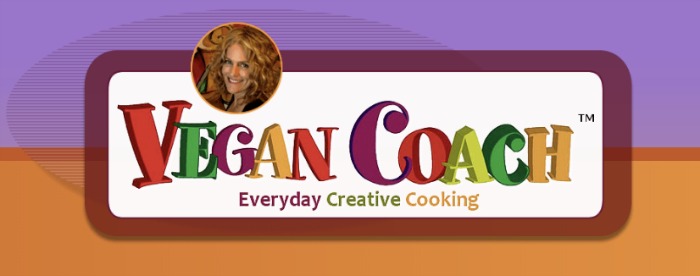
If creating and selling digital products has you stuck, you’re not alone.
There’s a kind of mythology built up around making digital products. We think it must involve lots of coding and programming and words we don’t understand and — gasp — apps!
But an online business selling digital products is not very different from one selling physical products. Success depends on finding and marketing a product that’s valuable to your potential customers. One that offers a solution to a problem, or meets a pressing need.
In this article, we’ll cover everything you need to know about selling digital products, including plenty of product ideas and examples.
So let’s get started.

First Things First: What Is a Digital Product?
A digital product is simply an intangible commodity that’s sold and delivered online.
Because it’s distributed online, there’s no need for shipping. It’s sent via a download, which can be accessed immediately on any computer, tablet or smartphone.
Think of it this way: a paperback book is a physical product. A Kindle book is a digital product.
But if you think ebooks are the only profitable example of digital products, think again!
Selling Digital Products vs. Physical Products: Which Is Best?

If we think of physical products as those you sell through an affiliate link — Amazon, for example — some of the benefits are exactly the same.
- It’s passive income.
- You can sell from anywhere.
- Overhead costs are low.
The perceived benefits of a physical product can sometimes be linked to demographics:
- Some customers, for example, the young and the over 65, prefer to be able to see, touch and feel products before they buy.
- Some customers prefer a product they can hold in their hands. Books are a good example: some people enjoy the experience of holding a book, and having books around them.
- Older generations may look on digital products as having a lower value.
But the potential disadvantages of physical products for you as a business owner are substantial:
- Unless you create your own physical product, you’re reliant on someone else. Amazon can withdraw a product, and affiliate companies can go under.
- If you don’t own the product, you can’t guarantee quality.
- You have no control over the amount of sales commission you receive.
Creating and selling digital products, on the other hand, has benefits for both you as the creator and seller, and for your customers:
- You own it: No one else has any control over it.
- Digital products are scalable: You create it once, and it can be downloaded an infinite number of times.
- Higher profit margin: You’re not paying anyone else’s fees, and many digital products are inexpensive to make.
- Instant gratification: The product is available immediately as a download.
- Ecologically sound: No trees are cut down to make ebooks, and no air is contaminated by delivery trucks.
There are, though, some disadvantages to selling digital products:
- They’re often easily copied and shared illegally.
- Depending on the product, they can be time-consuming to make.
- Not every product lends itself to being delivered digitally.
As with any selling, don’t rely on your own whims and impulses to decide between physical and digital products. Think about your audience’s position.
For example, do your people have easy access to the tools they’d need to download digital products? A computer or a mobile device? Bandwidth for downloading and streaming?
At the end of the day, the important question to ask yourself, before you decide how to monetize your blog, is this:
“What product can I offer that will best serve my customers?”
Where to Sell Digital Products
On the technical side, you may be wondering, “Where can I sell digital downloads?”
How and where you sell your digital product will depend entirely on the product itself. The most obvious place is your own website or blog. Why?
- No overheads apart from the cost of keeping the site online.
- No fees other than payment processing fees.
- You have total control over the content, profit, and promotion.
However, selling on your own platform does depend on having a good amount of traffic. Check out our article about how to promote your website for more on attracting visitors.
As we go through each potential product in detail, we’ll cover how easy it is to sell them on other platforms with a ready customer base.
If you don’t yet have a blog or website, take a look at our article about how to choose the best blogging platform.
How to Price Digital Products to Sell

It’s the question everyone asks:
“How much should I sell my product for?”
And, inevitably, the answer is: “It depends.”
But there are issues you can take into account when setting prices for your digital products:
- Value of the digital product. How much value will your customers gain from the product? Consider how much it will enhance their life, or how big a problem it will solve.
- How much disposable income do your customers have? If your niche audience is young families, their level of disposable income is likely to be lower than “empty nesters,” but more than retired seniors.
- Are you selling to businesses? Those businesses are likely to be reselling or making money in some way from your product.
- Take overhead expenses into account. Account for everything you have used to create the product, including freelancers and software subscriptions.
- Include your own time in the cost calculations. Your time is a valuable asset. Don’t underestimate it.
- Account for discounts and promotions. Do you plan to use discounts for special occasions, or as an ongoing “sale” price?
- Consider in-platform price discounts. Some platforms, such as Zazzle, may discount products by as much as 90% without even asking your permission! Learn more about the pros and cons of using Zazzle.
- Take a look at some of your competitors. What are they creating and what do they charge?
Digital Product Ideas and Examples

Before you choose which digital product idea to start with, don’t skip these critical steps:
- Understand your customers and their most critical problems or essential needs. Check out my article on writing product reviews for tips on this.
- Consider what skills and knowledge you have that would best solve that problem or meet that need.
- Decide what type of product will best combine those two factors.
Let’s now consider some digital product ideas that might meet your customer’s needs while harnessing your expertise.
1. Simple Digital Downloads: Documents, Templates and Scripts
Difficulty: Low
Like writing a book, but shorter and easier!
People love lists, and your customers are likely to need worksheets, checklists, scripts and templates for all kinds of things.
Think of the kinds of scripts or templates you already use in your niche — or in your personal life — and turn it into a digital product you can sell.
Kathy Milano, for example, used SBI! to create a website all about writing thank you notes.
She took her mother’s insistence that she always write a thank you note and turned it into a profitable online business, providing instructions…
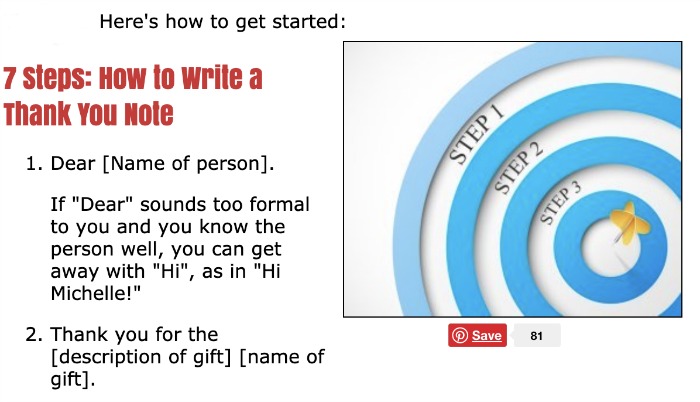
…and selling templates.
Taylor Flanery was a litigation attorney and a busy mom of three when she decided to quit her day job. She centered her website around something she knew a lot about: how to organize your home.
Her monthly declutter calendars, checklists and templates form the backbone of her home organization online business.
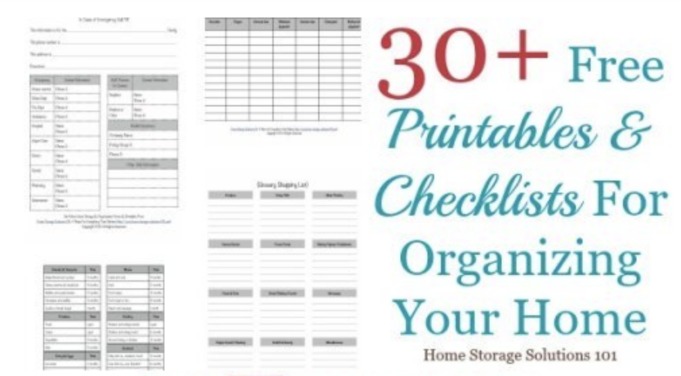
To get ideas, think about the processes you use in your niche, that could be useful to your audience.
Pros
- Quick to create.
- It provides immediate practical value.
- It provides an entry point for new customer relationships.
Cons
- Printable downloads can be easy to plagiarize.
- You need more time than you might think, to draft, edit and polish.
Skills and tools required:
A basic, free template for a letter is simple and quick to create with tools like Microsoft Word or Google Documents.
If you decide to create products to sell, however, skills and tools needed, and amount of time invested, will increase.
A script for a podcast, for example, or a pre-written speech, will require a fuller document, possibly using a PDF creator so the recipient can fill in the blanks.
Any digital document can be marketed and sold online from your own blog.
Earning potential:
- Most simple documents are used as free lead magnets for growing an email list.
- The potential can be higher depending on your niche and the complexity of the document. Providing one template for a “welcome” email, for example, wouldn’t attract many buyers. But a complete set of bespoke automated emails for a newsletter is a far more detailed product..
“Math Salamanders,” for example, has a number of simple, free downloadable math worksheets. But he has also developed those worksheets into a series of downloadable games, sold as ebooks.

2. Spreadsheet Trackers and Online Calculators
Difficulty: Low
Take your worksheet idea to the next level by creating a spreadsheet that does calculations for your customer.
Some examples might be:
- workouts in the fitness niche
- weight loss over time
- home budget over a month / year
- budget for kitchen (or any type of) renovation
- business profit and loss
Is there a calculation your customers could be helped with?
Pros
- It’s simple to create, if you’re skilled in Microsoft Excel or Google Sheets.
- High perceived value.
- It’s instantly usable.
- Offers real savings in time and, potentially, money.
Cons
- You might need to outsource product creation.
- It could be time consuming to create.
- Customers may need a written, or video, walk-through.
Skills and tools required:
You’ll need the skills to produce the spreadsheet itself, and skills in creating the tutorial explaining how to use it.
You also need somewhere around 15 – 20 hours to produce the spreadsheet plus tutorial. But remember — you only have to create it once!
If you create a video tutorial, you’ll also need somewhere to host it. There are options here:
- Use a provider such as Wistia, with a copy on your website or blog.
- Host it on YouTube, adding a link to the sales page on your blog.
Earning potential:
Depending on how far you want to take it, this digital product can be a high value item.
Dan Peterson has developed a highly successful online calculator business creating exactly this type of digital product.

3. Writing and Publishing Ebooks
Difficulty: Medium
Ebooks are said to be the fastest growing digital market in terms of annual growth, projected to be at around $29 billion in 2020.
Pros
- Easy to produce from your existing knowledge.
- Self-publishing is straightforward with platforms such as Amazon’s Kindle Direct Publishing.
- You can advertise and publish on your own blog, in PDF format.
- Easy and instant for customers to consume.
- You can set your own price.
Cons
- Many ebooks are poorly written and consumers can be wary of the market.
- Once someone has an ebook, there’s nothing to stop them from uploading it to the internet, or copying and republishing as their own.
- An ebook, even a short one, takes a long time to research, write, edit and proofread.
Skills and tools required:
If you have a successful blog or website, you have the skills: knowledge of the niche, and the ability to educate, advise and inform.
Turning a document into a PDF download is simple using Microsoft Word, Adobe Pro or Apple’s Pages.
Earning potential:
- Writing an ebook to use as a lead magnet to grow your email list is a great place to start.
- Don’t stop at selling a single ebook. Consider writing a series like Teresa Mills:

- Carl Trent, The Disney Dad, began by selling ebooks from his website, and graduated to a successful magazine publication with both digital and print versions.

4. Creating Passive Digital Income From an Email Course
Difficulty: Medium
Since you’re already writing great content for your blog — and possibly ebooks too — you should have no difficulty translating those skills to an email course.
Here’s an example of an email course for people getting started with blogging:
Send a daily email for a month providing tips for writing blog posts. One day would cover writing titles, one subheadings, the next using images, and so on. You could round out the course by including motivational tips and ideas for getting past writer’s block.
Pros
- Inexpensive to set up.
- You should already have plenty of content based on your knowledge.
- It’s a great passive income stream.
- Emails are easy to tweak as you go along, based on feedback you receive.
Cons
- Time: Charging for a course like this means you need to provide high quality information that your subscribers can’t easily find elsewhere.
Skills and tools required:
As with any written digital products, you need the ability to provide unique content your subscribers can use to transform their daily life.
Remember: you need to stand out from the crowd.
You’ll also need an email platform, to send automated emails. AWeber has excellent information about this (even if you’re not yet a customer of theirs). ConvertKit’s “Sequences” feature makes it super-simple to set up and sell email courses.
And, of course, you’ll need a website or blog good traffic, on which to promote and sell your course. Learn more about how to get started with these online business-building tools.
Earning potential:
There are different possibilities here. You could:
- Create worksheets, or other upsells to run alongside your email course.
- Put together all the email content as an ebook to sell. People like having information all in one place.
- Add on a private group, such as a Facebook group.
- Use the email course as a precursor to a more expensive online course.
I have an automated email course that teaches my subscribers, over a period of 28 lessons, how to successfully prepare for incubating and hatching chickens.
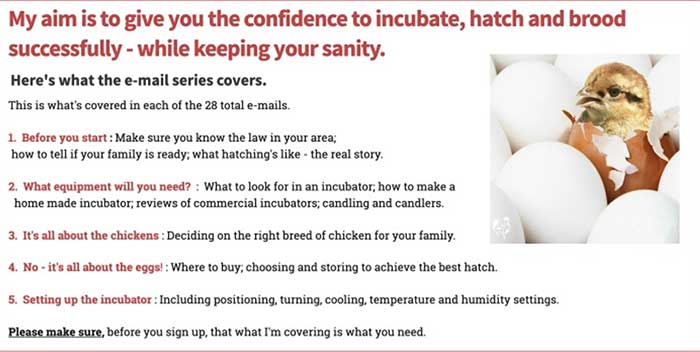
The cost of that course is relatively small — just $9.99.
The email course leads to a more expensive online course covering everything about incubating and hatching.
5. Creating and Selling Online Courses
Difficulty: High
So you’ve started to sell an automated email course. Now all you need to do is take it up a notch (or three!) and write a full online course.
If you have a website, you probably have the bones of a course. Take that content and make it better: more detailed information, more unique content, more stunning imagery, video training, and downloadable worksheets.
You can host the course in password-protected pages of your website, on a membership site, or on one of the many online course platforms.
Use the passion you have for your subject, and give it your own unique spin.
For example, I initially called my course “Hatching Happy Chickens” to match my site name (“Raising Happy Chickens”). I rebranded it as a “Club,” limiting numbers to give a feeling of exclusivity.
It worked. Subscriber numbers doubled.

What would be a course relevant to your audience?
Pros
- Another passive income model.
- You reach a much broader audience than you would teaching an offline course.
- There’s no inventory and a potentially high profit margin.
- Platforms such as Teachable and Udemy gives you access to many students. Udemy alone has more than 30 million registered students.
Cons
- It takes time to get to a high enough level of experience and expertise.
- Online course creation is very time-consuming.
- If you use a platform such as Teachable, you’ll need to pay fees.
- Udemy, while easy to use as an instructor, can less profitable: they regularly offer price reductions.
Skills and tools required:
The ability to teach in a clear way, visualize and organize materials is particularly relevant here. You’ll need to know when to use text, images, video, and worksheets in your course.
And you need a clear, well modulated speaking voice so that you don’t put your students to sleep during their tutorials!
Earning potential:
There are several ways an online course can use add-ons to increase value — and charge a higher price:
- Interactive live videos: I include live videos to show subscribers what to look for in the chick’s development.
- Add group membership: In a Facebook group, members can help each other with problems or questions.
- Weekly live tutorials: Offer information in addition to your course, or question and answer sessions. This can be daunting, especially for the introverted entrepreneurs among us
- Offer one-to-one coaching: The ultimate in personal attention. And the ultimate in cost. This successful “Vegan Coach” online business has coaching upsells down to a fine art.
She offers a series of courses ranging in value from “The Quickie” at $97, to “The Motherlode” at $275 — with an add-on option of a personal coaching call at $55 per 30 minutes.
6. Digital Images: Art and Photography
Difficulty: High
Do you have a high level of skill as a photographer or artist? If so, creating and selling digital images may be a great monetization option.
Exceptional quality, unique images are one of the most sought after digital products. The biggest group of consumers of those images are bloggers and website owners .
Stock images can be a little cheesy, and it’s not uncommon to see the same images appearing on different blogs. Many blog owners are willing to pay for some truly different, personalized images that no one else has!
Which is where you, the photographer, come in. Sell your photos online, either on your own website or on one of the many stock photo platforms.
Pros
- Blog owners are a massive market.
- It can be rewarding to make money from your art.
Cons
- Requires expensive equipment.
- Skills in both photography and editing must be high.
- Your images must stand out from the crowd to have any chance of bringing a good income.
- Stock image sites take between 20% and 60% of the sale price of your image, so margins on those platforms are small.
Skills and tools required:
 It can take hours to get “just the right shot.” Indeed, some professional photographers talk in terms of years!
It can take hours to get “just the right shot.” Indeed, some professional photographers talk in terms of years!
You will need a high standard of photographic and editing equipment to produce images of a high enough quality.
Earning potential:
If you want to make the most of monetizing your images, owning your website or blog is essential. Not only can you showcase your best images, but your customer can read their backstory, too.
As well as your profit margins being much higher than selling on a stock photography platform, the potential for being used more widely is colossal.
Talented SBIer Carol Leather has done exactly that on her website, Nature Walks With Carol.

Not only has Carol won several wildlife photography awards, her site has been found and her photographs featured on Canon EOS magazine, a UK television weather forecast, and several wildlife calendars!
7. Software, Apps and Design Templates
Difficulty: Very High
Now we’re in the realm of highly skilled digital product sales. But if you have the skills and knowledge to produce software, apps, design themes, or plugins, your monetization potential will skyrocket! Why?
Every day more people want to start their own online business without the knowledge or skills to be able to turn their dreams into reality. Helping a solopreneur create a strong visual identity is a valuable commodity.
Let’s look at a few possibilities.
Design templates: Companies tire of the “same old, same old” designs and will pay for a custom product. For example, PowerPoint slides or Canva templates can be bundled and sold.
Graphic design: if you’re skilled in graphic design, create products from logos and icons to original digital artwork in cards, patterns, backgrounds and more.

Themes, typefaces and plugins: If you already design websites or blog layouts for family and friends, why not consider creating a theme or plugin for WordPress?
You can even learn how to do it by taking a Udemy course!
Apps: you know the phrase — “there’s an app for that!” But for many small online business owners, there isn’t — and they shy away from thinking about it because they’re afraid of the cost, and don’t have the skill to write an app themselves.
Do you?
And finally, the ultimate digital product: creating the perfect website design. Most platforms now have easily uploaded templates. But those who want to build a unique online business want a unique look.
Pros
- It’s a huge market, with nearly two billion websites currently online.
- This is the most lucrative of all digitally produced goods.
Cons
- This is far from being passive income. It’s about as labor-intensive as you can get. No two products can be the same, so there’s no way to scale this, except to hire staff.
- You may be competing with the “big guys.” But there’s no reason why, if you’re talented enough, you can’t become a “big guy” yourself!
Skills and tools required:
This is a complex, technical area. Your skills in graphics, design and coding must be exceptionally high to succeed in this market.
Earning potential:
There is very high potential in this huge market, but it depends entirely on what you’re creating and your level of skill.
If you’re currently developing logos, for example, you may want to develop your design skills enough to be able to offer entire website design.
And if you’re offering entire website design, then the potential for developing a financially secure future is also high.
Add on a downloadable worksheet, ebook or video tutorial about how to use the product, and increase the monetization potential yet more.
The possibilities are endless.
Ready to Start Selling Digital Products?
There you have it. A comprehensive list of seven digital product ideas to create and sell online, from the very simple to the very complex.
Want even more ideas? Check out this article featuring 5 rather unusual types of information products.
There are opportunities here no matter what your niche is, and how high your level of expertise.
But beware: don’t create a product that doesn’t fit both your niche and your level of skill.
Creating products that don’t resonate with your audience, or are poorly presented because you’re not sure what you’re doing, won’t do you any favors.
Remember: the starting point is always your potential customer.
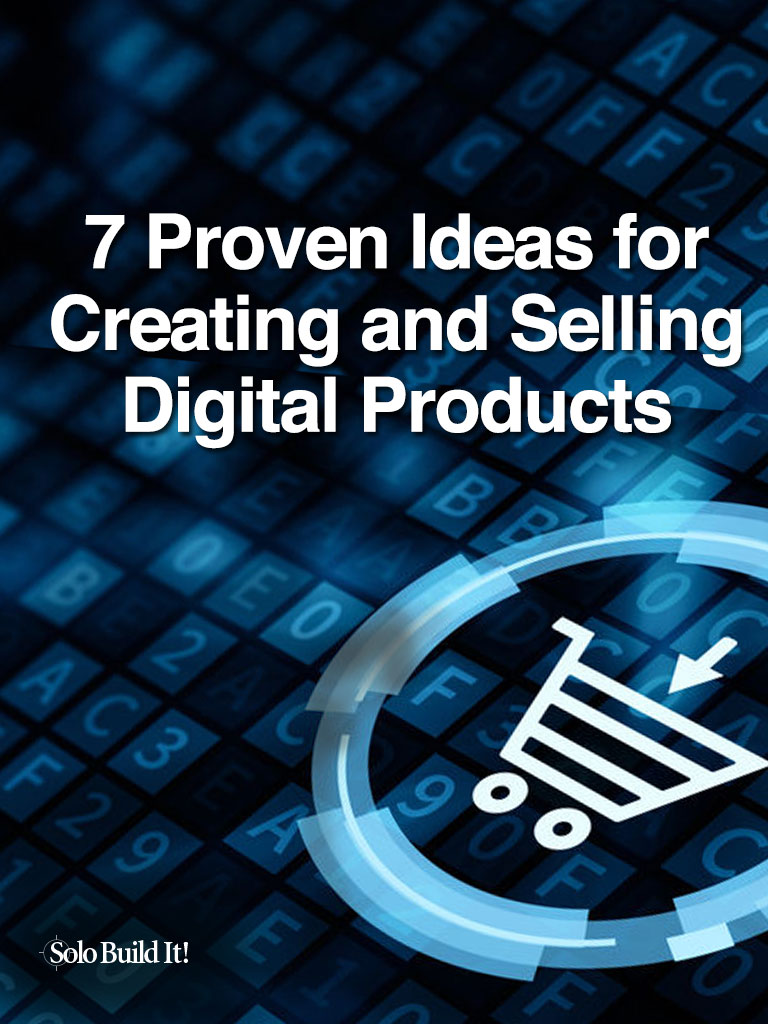
Cath Andrews
Latest posts by Cath Andrews (see all)
- Start a Passion-Based Business and Live Your Dream - February 1, 2023
- What Do You Say When Their Eyes Glaze Over? - December 20, 2021
- How to Monetize Your Email List in 5 Simple Steps - October 26, 2021

